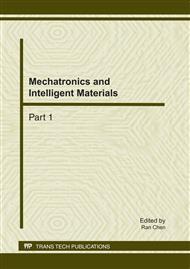p.172
p.177
p.182
p.186
p.190
p.195
p.200
p.205
p.209
Finite Element Analysis of Diesel Engine Cylinder Head Stress and Deformation with Thermal-Mechanical Coupling
Abstract:
Considering the structure of some diesel engine cylinder head, its 3-D solid model and the finite element model is built, and after the load and constraint of is deal with, the stress and deformation the cylinder head with thermal-mechanical coupling is calculated with FEA ( Finite Element Analysis) software ABQUS. Analysis results find that: (1) the first main stress maximum value of cylinder head is up to 199.6MPa, which is less than 250MPa of the HT250 material ultimate tensile strength; (2) the deformation area is mainly in the flame face surface and fuel injector coxcombing, and the deformation of flame face is general symmetrical broadways and slightly large near the exhaust passage longways, while the deformation of fuel injector coxcombing is general symmetrical broadways and longways; (3) the structure design and strength of the cylinder head satisfy the design requirements.
Info:
Periodical:
Pages:
190-194
Citation:
Online since:
February 2011
Authors:
Price:
Сopyright:
© 2011 Trans Tech Publications Ltd. All Rights Reserved
Share:
Citation:


